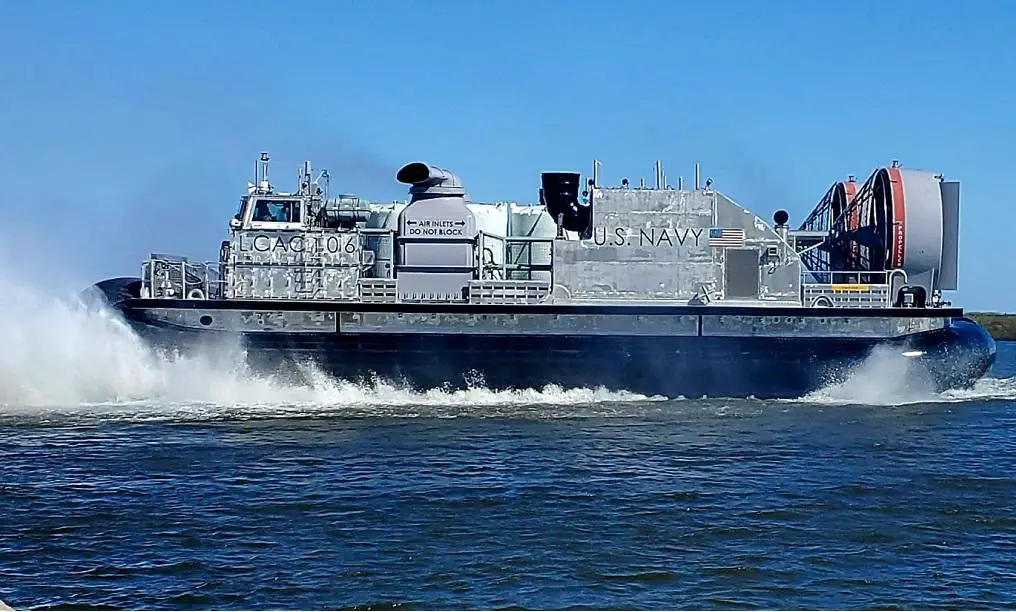The U.S. Navy accepted delivery of the next generation landing craft, Ship to Shore Connector (SSC), Landing Craft, Air Cushion (LCAC) 106 on November 17. LCAC 106’s delivery follows the completion of Acceptance Trials with the Navy’s Board of Inspection and Survey to test the readiness and capability of the craft and to validate requirements. As one of the Defense Department’s largest acquisition organizations, PEO Ships is responsible for executing the development and procurement of all destroyers, amphibious ships, special mission and support ships, boats and craft.
“We are excited to deliver this next generation craft to the Navy and Marine Corps team,” said Capt. Jason Grabelle, program manager, Amphibious Assault and Connectors Programs, Program Executive Office (PEO) Ships. ”LCACs are providing our Navy and partners with the speed and agility essential to our missions.”
The Ship-to-Shore Connector (SSC), also known as the LCAC 100 class, is a system proposed by the United States Navy as a replacement for the Landing Craft Air Cushion (LCAC). It will offer an increased capacity to cope with the growing weight of equipment used by the United States Army and Marine Corps.[5] As of 2015, the program is forecast to cost a total of US$4.054B for 73 hovercraft. LCACs are built with similar configurations, dimensions, and clearances to the legacy LCAC, ensuring the compatibility of this next-generation air cushion vehicle with existing well deck-equipped amphibious ships.
The four Rolls-Royce MT7 gas turbines that will be used to power each Ship-to-Shore Connector are derivatives modelled after the design of the Rolls-Royce T406 used in the Bell Boeing V-22 Osprey. The cores of the two engines types are identical, which should provide some relief in spare parts storage to those ships that will operate both the (tiltrotor) aircraft and the hovercraft. Top speed will be 50 kn (58 mph; 93 km/h). A simpler and more efficient drivetrain using one gearbox is on each side for fewer parts, less maintenance and higher reliability. The SSC has a designed lifetime of 30 years.












